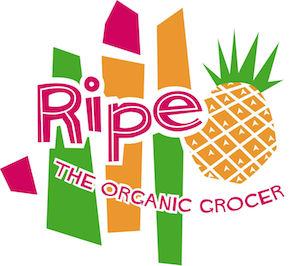The Cacoa tree is grown in the tropics, and there are many varieties grown to suit different climates and environments. There are three main cultivar groups of cacao beans used to make cocoa and chocolate. The most prized, rare, and expensive is the Criollo Group. Only 10% of chocolate is made from Criollo, which is less bitter and more aromatic than any other bean. After harvest, the cacao beans are fermented, allowing the flavour to transform into that which we associate with chocolate. After the fermentation, the beans are dried, and this can take up to 2 weeks. During this time, the beans change from a rich red colour to dark brown.
Usually the beans are then roasted to improve the flavour further, before they are made into Cocoa Powder and Chocolate, and the shells are removed from the beans If left raw, however the anti-oxidant and mineral content is much higher. Raw Cocoa Beans, Nibs and Powder are all now available organically, from a company called Living Earth.
Cocoa is extremely rich in magnesium. Cocoa is a primary source of magnesium. This is likely the reason women crave chocolate before or during their period. Magnesium also balances brain chemistry, builds strong bones, and is associated with a sense of well being and happiness. Many people are deficient in Magnesium, but it is worth noting that the conventional practice of making chocolate with refined sugars and dairy products makes it harder for the body to absorb the magnesium. Raw Cocoa products have up to 4 times the nutrient qualities of their roasted counterparts.
Cocoa Beans:
The fermented and dried beans of the cacao plant. The dark brown bean has a husky skin which needs to be removed before eating. Cocoa beans have no sugar content, and the flavour is strong and bitter. These beans are sometimes referred to as raw chocolate.
Cocoa Nibs:
These are cocoa beans which have been separated from their husks and broken into small bits. These can be eaten straight or with sweeteners such as honey or agave syrup, added into biscuits for crunch or used in place of chopped nuts as a garnish. Cacao nibs keep well in cool, dry conditions.
Cocoa Powder and Cocoa Butter: Raw cocoa powder and butter comes from Peru where raw Peruvian criollo cacao nibs are cold pressed into anti-oxidant rich cocoa powder and highly sensual cocoa butter. Cocoa butter is the ingredient that makes chocolate set, and gives the smooth mouth feel. It is also an ingredient in some cosmetics, such as handcreams and moisturisers. To be raw, the cocoa powder is kept below 45 degrees celcius at all stages of processing. This low temperature process keeps delicate vitamins, minerals and antioxidants intact, allowing for maximum digestion and absorption.
Ideas for using raw cocoa powder:
*blend raw cocoa powder with milks – dairy, nut, rice or soy milk, with a little sweetener such as honey or agave to taste.
*Blend with a sweetener and a little organic coconut oil for delicious chocolate syrup.
*Freeze bananas and blend together with honey, cocoa powder, and raw cashews that have been soaked in water to make a delicious raw ice-cream.
In 1753 Carl von Linnaeus, the 18th-century Swedish scientist, thought that cacao was so important that he named the genus and species of this tree himself. He named this tree: Theobroma cacao, which literally means “cacao, the food of the gods.”

